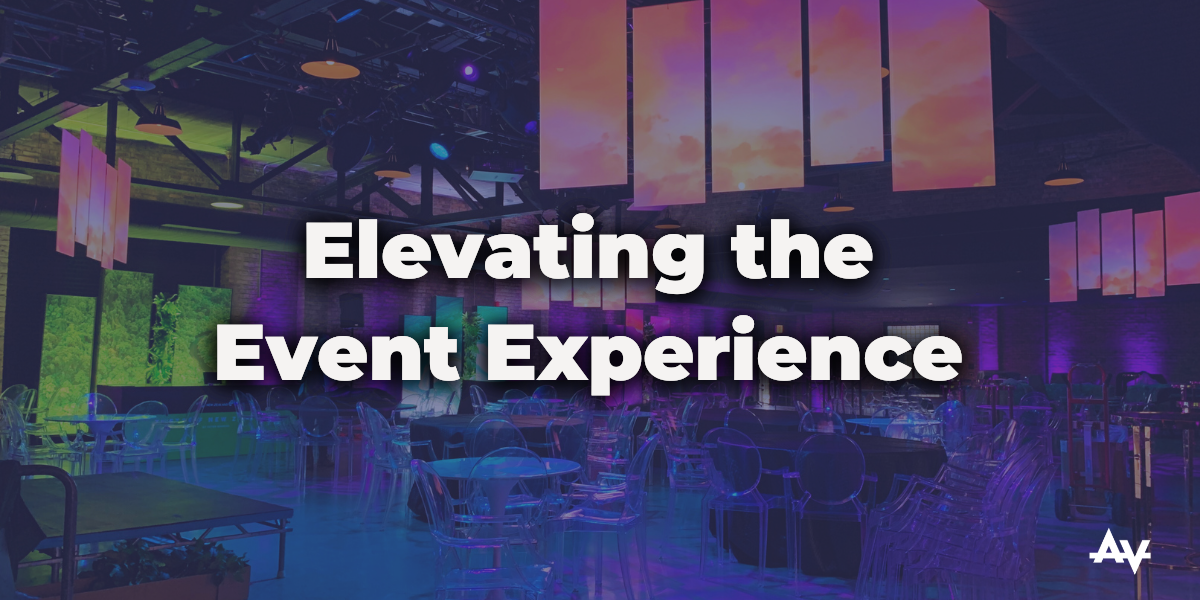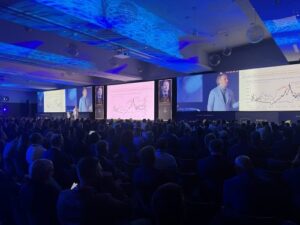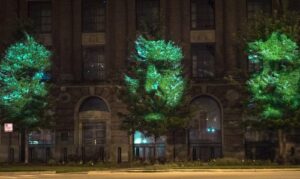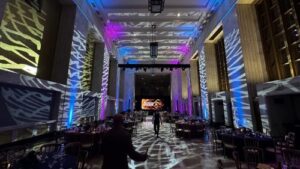
Advanced Graphics: Elevating the Event Experience

Having the latest and greatest technology doesn’t guarantee you use it to its full potential. Many people focus on the technology they will use when planning an event, but they should instead consider how advanced graphics can enhance their messaging and overall event design. When thoughtfully designed to interact with technology, compelling graphics can be critical storytelling elements, leaving a lasting impression on attendees.
Motion Graphics

Incorporating motion graphics can enhance the depth and excitement of your event design. The real-time VJ and motion graphics software program Rosolume can integrate camera tracking or motion sensors to activate graphics based on movement. This allows you to create an interactive entranceway or have moving graphics that respond to the speaker walking across the stage.
These types of graphics are ideal for use with video walls and LED totems. Audio frequencies can also be used for motion graphics, which change based on music or speech intensity.
Lower Thirds/Video Overlays

While large-scale visuals can significantly impact your event, it’s essential to consider the finer details and how they can be conveyed through graphics in lower thirds, a graphic overlay that appears in the lower section of the video screen, or other video overlays. Well-designed graphics in videos can enhance your messaging, uphold brand consistency, and provide a more polished look.
This can be utilized when hosting a hybrid event to engage your virtual attendees with animated lower thirds, speaker information, or real-time updates. For in-person engagement, subtle overlays can be added to help identify speakers and panelists during your event. You can also display real-time polls or social media feeds to encourage audience participation or showcase sponsor logos and have animated callouts to enhance sponsor visibility.
Projection Mapping

Projection mapping involves using imagery to create immersive experiences. Imagine your attendees entering your venue and watching as their silhouette
s are projected in real-time on a wall. Major brands are already using this form of interactive projection, making their guests an active part of the experience through movement triggers.
Touchscreens and Interactive Displays

Merely having a touchscreen doesn’t guarantee interaction. The content is what truly encourages engagement. Graphics for touchscreens should include clear calls to action, helping attendees navigate schedules, access additional event information, complete event surveys, or even make a donation or purchase. It can also assist in providing real-time updates if changes during the event need to be communicated quickly.
Aligning Content with Technology

One critical mistake many event organizers make is designing content without considering the display medium. Graphics should enhance and leverage the technology for greater impact, whether through interactive displays, LED walls, or projection mapping at your event. Merely having cutting-edge technology is pointless if the content does not align with the capabilities of that technology. Without careful content creation, even the most impressive technology can fall short.
Adopting a content-driven approach for your next event, including leveraging interactive advanced graphics, is an easy way to help it leave a lasting impression. No matter the technology you use, whether it’s touchscreens, LED walls, or projection mapping, make sure well-executed graphics are one of the first things on your to-do list.
Need help incorporating advanced graphics in your next event? Contact AV Chicago.
